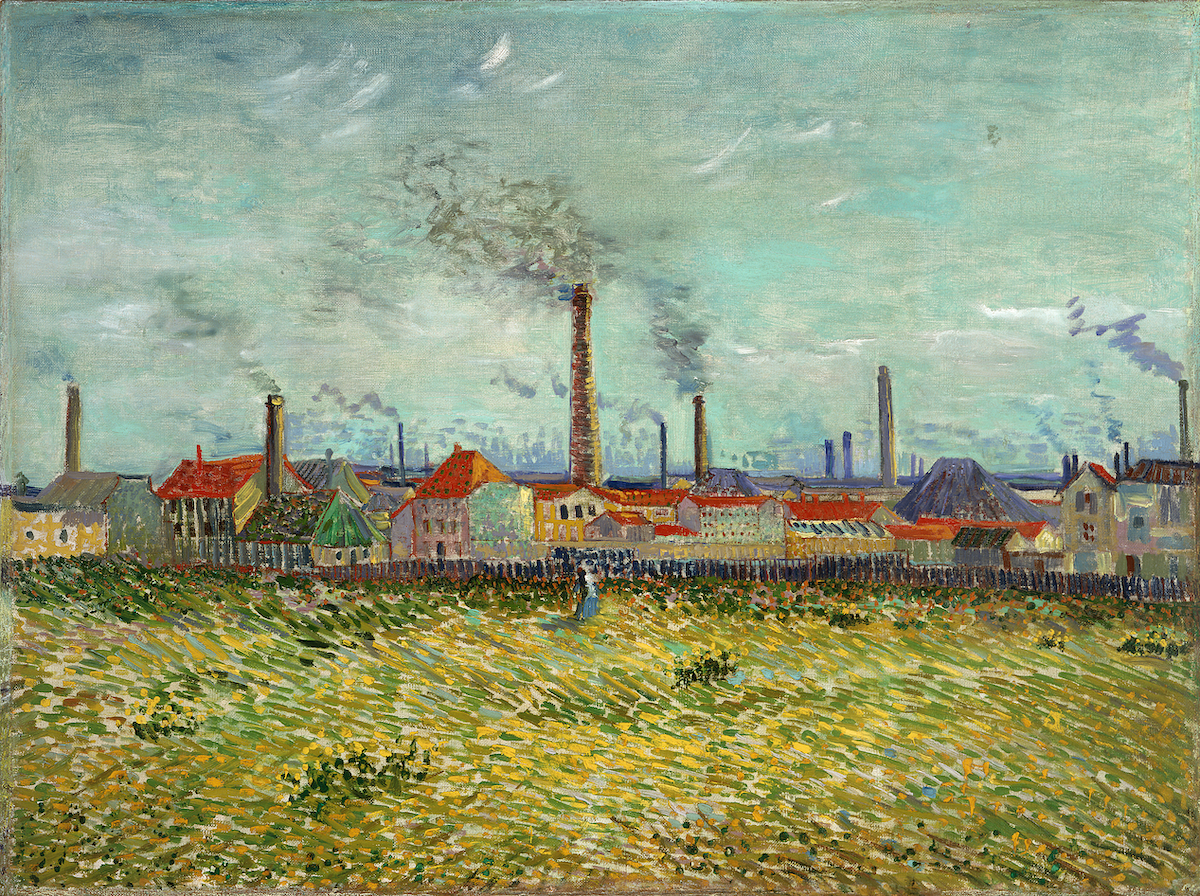This wonderful Cornish workshop and museum is dedicated to the legacy of studio pottery trailblazer Bernard Leach
5 things to know about this stunning Van Gogh painting
5 things to know about this stunning Van Gogh painting
13 Dec 2023
We might think of LS Lowry when we muse on how factories feature in the history of art, but Vincent van Gogh got there first. Bregje Gerritse examines his lesser-known but beautiful Factories at Clichy
 Factories at Clichy, by Vincent van Gogh. Image: Saint Louis Art Museum, Missouri. Funds given by Mrs Mark C Steinberg by exchange
Factories at Clichy, by Vincent van Gogh. Image: Saint Louis Art Museum, Missouri. Funds given by Mrs Mark C Steinberg by exchange
Vincent van Gogh (1853–90) painted Factories at Clichy between early May and the end of July 1887.
He considered this period a ‘painting campaign’, with his focus being the
suburbs northwest of Paris, along the Seine. From Montmartre, where he lived with his brother Theo, he would set off almost daily, his equipment on his back, and walk five kilometres to Clichy, Asnières and Courbevoie. At 53 x 72cm, this painting is one of the bigger canvases he made, the distance preventing him from carrying large ones.
His purpose was to discover new subjects in this rapidly transforming region. From the mid-19th century, industry was on the rise. Rural suburbs were increasingly characterised by iron bridges, commercial activity on the water and factory smokestacks.
This work is therefore a snapshot of a key moment in Europe’s development as an industrial power.
Here are five elements that will get you closer to the story behind the painting.
1. See the smokestacks
Clichy, described as ‘a city of business rather than pleasure’, was relatively undeveloped and sparsely populated. It was close to Paris, directly across from Asnières. Although there were undoubtedly smoking chimneys in Clichy, it seems Van Gogh exaggerated this feature in his painting. Using small touches of purple paint, he created the illusion of smokestacks as far as the eye could see.
2. Spot the figures
Although the industrial scene in this painting looks large, there are no signs of factory workers. But take a closer look: you can see just two small figures in the foreground. With a few, tiny brushstrokes Van Goghindicates a strolling couple. He placed them strategically below the largest smokestack in the middle of the canvas, so emphasising its scale.
3. Inspired by colleagues
Van Gogh was not the only painter attracted to the radical contradictions visible along the
Seine. Georges Seurat, Paul Signac, Émile Bernard and Charles Angrand could regularly be found on the banks of the river in the 1880s. It’s thought Van Gogh was inspired by them to paint industrial sites. The artists knew each other and occasionally worked together but did not form a group.
4. Colour and verve
Moving to Paris in 1886 had allowed Van Gogh to experience modern painting. The area along the Seine offered not just new, contemporary subjects – it prompted him to experiment with modern painting styles. This work is an example of how his art became more colourful. He shows the sky in light blue, with white dashes signifying clouds; he chose bright red for the rooftops and opted for a strong purple tone for the smokestacks. The lower half of the canvas has empty grassland, which he built up with elongated green and yellow strokes of varying thickness.
The time Van Gogh spent in these unassuming suburbs triggered a radical innovation in his work. Paintings such as this were a prelude to the more intensely coloured works he would create a year later in the south of France.
5. Rare showing
There are only two known paintings of factories by Van Gogh. It was an unusual subject for the artist; he generally preferred rural subjects and found inspiration in nature. This painting is now part of the collection of the Saint Louis Art Museum in Missouri. The second canvas, showing a glass factory in Clichy, is part of the Barnes Foundation collection in Philadelphia and dates from the same period.
See
Van Gogh along the Seine at the Van Gogh Museum in Amsterdam
Until 14 January 2024
About the Author
Bregje Gerritse
is a researcher and curator at the Van Gogh Museum in Amsterdam
JOIN OUR MAILING LIST
Become an instant expert!
Find out more about the arts by becoming a Supporter of The Arts Society.
For just £20 a year you will receive invitations to exclusive member events and courses, special offers and concessions, our regular newsletter and our beautiful arts magazine, full of news, views, events and artist profiles.
FIND YOUR NEAREST SOCIETY
MORE FEATURES
Ever wanted to write a crime novel? As Britain’s annual crime writing festival opens, we uncover some top leads
It’s just 10 days until the Summer Olympic Games open in Paris. To mark the moment, Simon Inglis reveals how art and design play a key part in this, the world’s most spectacular multi-sport competition



